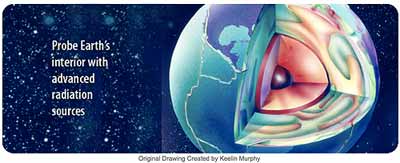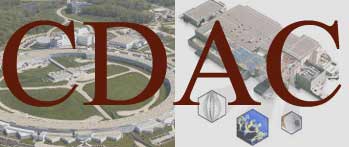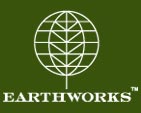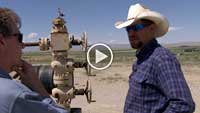Biblio
The Consortium for Materials Properties Research in Earth Sciences (COMPRES) is a community-based consortium whose goal is to enable Earth Science researchers to conduct the next generation of high-pressure science on world-class equipment and facilities.
COMPRES is charged with the oversight and guidance of important high-pressure laboratories at several national facilities, such as synchrotrons and neutron sources.
COMPRES is supported by the Division of Earth Sciences at the National Science Foundation.
Goncharov, Alexander. “Unanswered Questions in Deep Carbon Research” presented at the 2009 Annual Meeting keynote | Sloan Deep Carbon Cycle Workshop, Carnegie Institution, Geophysical Laboratory | Washington, D.C., May 15, 2008.
A. Kolesnikov, et al., "Methane-derived hydrocarbons produced under upper-mantle conditions". Nature Geosci., 2, 566-570 (2009).
"Our results support the suggestion that hydrocarbons heavier than methane can be produced by abiogenic processes in the upper mantle."
Recent work carried out at Carnegie/DOE Alliance Center (CDAC) suggests that substantial amounts of the hydrocarbon material could exist in the deep Earth and be formed by inorganic (or abiogenic) processes. These hydrocarbons, which include natural gas and petroleum, could migrate from the mantle to the near-surface region and contribute to 'fossil fuel' reserves. Read more about the work of Alexander Goncharov and colleagues from Sweden and Russia here.
A number of chemical reactions have previously been considered as a potential mechanism for hydrocarbon genesis, but they were not verified experimentally under conditions relevant to the Earth’s interior.
See: Sloan - Carnegie Institution for Science. 2008. Deep Carbon Observatory Founders Committee Meets: Needs and Opportunities in Deep Carbon Cycle Research.
To date, consideration of the global carbon cycle has focused primarily on near-surface (i.e., relatively low-pressure and temperature) phenomena, with the tacit assumption that oceans, atmosphere and shallow surface environments represent an essentially closed system with respect to biologically available carbon.
However, recent data and theoretical analyses from a variety of sources suggest that this assumption may be false.
See: Sloan - Carnegie Institution for Science. 2009. Hydrocarbons in Deep Earth?
The oil and gas that fuels our homes and cars started out as living organisms that died, were compressed, and heated under heavy layers of sediments in the Earth’s crust. Scientists have debated for years whether some of these hydrocarbons could also have been created deeper in the Earth and formed without organic matter. Now for the first time, scientists have found that ethane and heavier hydrocarbons can be synthesized under the pressure-temperature conditions of the upper mantle —the layer of Earth under the crust and on top of the core. The research was conducted by scientists at the Carnegie Institution’s Geophysical Laboratory, with colleagues from Russia and Sweden, and is published in the July 26, advanced on-line issue of Nature Geoscience.
Directed Energy Drilling (from MIT)
Mechanical drilling technologies are fully mature. New approaches are needed to make future major advances in increasing access to and reducing costs for underground energy resources...
...There may be other paths to open well stabilization, unimaginable by current mechanical drilling experience that could make possible record penetration into the Earth’s crust with directed energy sources.
The technology that has been developed by DOE and the world wide fusion energy research community to heat plasmas to 300 million degrees Centigrade opens up new possibilities for drilling that should be explored. (Woskov,Cohn 2009)
See: Center for Dark Energy Biosphere Investigations (C-DEBI)
Gold, Thomas. 1998. The Deep Hot Biosphere : The Myth of Fossil Fuels. New York: Springer | Copernicus, November 6.
Woskov, P., and D. Cohn. Millimeter Wave Deep Drilling For Geothermal Energy, Natural Gas and Oil. Annual Report 2009. Plasma Science and Fusion Center: Massachusetts Institute of Technology, September 2009.
Coalbed Methane (CBM) Develoment in Wyoming's Powder River Basin is Transforming the Landscape.
Wyoming's Powder River Basin is experiencing the largest mineral boom in Wyoming history. Coalbed methane (CBM) gas development in the Powder River Basin has been characterized by industry as the "hottest natural gas play" in North America, making CBM development the greatest environmental and cultural threat Wyoming has faced in decades.
This "gold rush" style pursuit of CBM is presenting enormous challenges for urban and rural citizens, ranchers and farmers, and impacted municipalities.
The Powder River Basin Resource Council has responded by providing landowners with information on how to protect their property through surface access and damage agreements (See Help for Surface Owners).
We have joined forces with other groups and landowners to oppose the damaging discharge of billions of gallons of water. EPA is now requiring additional evidence and signatures from landowners to ensure that discharges are truly beneficial.
Our appeal of discharge permits has halted the discharge of any new water into the Powder River drainage or the Tongue River drainage. Industry's "quick fix" solution has been to build large waste pits to store the water can lead to salt and sediment buildup, potential contamination of shallow aquifers and acreage out of production.
See Additonal Information and Concerns over Coalbed Methane Development in the Powder River Basin.
See C-Span Book TV Oct. 2, 2004. Bushwacked: Life in George W. Bush's America. Chapter: "Dick, Dubya, and Wyoming Methane." (152)
Get an in-depth pollution report for your county, covering air, water, chemicals, and more. Enter your zip code for local information.
Take Action: Oppose EPA's efforts to weaken pollution reporting
 |
Who are the top polluters in the U.S.? |
We think American citizens have a right to know what toxic chemicals are being released into their communities. But the EPA recently proposed to limit the information that companies are required to disclose about the hazardous chemicals they release into our environment.
By reducing the reporting requirements of its Toxics Release Inventory program, the EPA would take away an important tool for protecting public health and reducing industrial pollution.
Supported by Green Media Toolshed.
See: Big Polluters Freed from Environmental Oversight by Stimulus - The Center for Public Integrity
"...Walter Hang, president of Ithaca-based Toxics Targeting Inc., has been working with Pulteney residents on the wastewater issue. Even with Chesapeake's decision, the Pulteney saga proves this is a problem that has not been adequately addressed by DEC and others, Hang said.
-----"That was obviously a ridiculously bad location to put a deep well injection facility," he said. "Why would you ship that water hundreds of miles to the middle of nowhere and move it to within a mile of this historic jewel of a Finger Lake?""
Fracking will require the storage of frack wastewater in pits.
There are many fluids and wastes associated with oil and gas operations that can poison living organisms. This web page contains information on some of the following issues of concern related to the storage and disposal of oil and gas wastes:
- How pit pollution occurs
- Soil and water contamination from pits
- Wildlife and livestock mortality related to pits
- Toxic materials stored and disposed of in pits
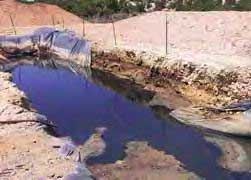
The mining of hardrock minerals — gold, uranium and other metals — on public lands in the West is governed today by the 1872 Mining Act. It has changed little since President Ulysses S. Grant signed it into law to encourage settlement of the West.
This 1872 law — on the books before the light bulb was invented — often gives metal mining special priority over recreation, ranching and conservation. It allows mining companies — even those that are foreign-owned — to take precious resources from public lands virtually for free, yet the oil, gas and coal industries have been paying royalties since the 1920s. And in what is arguably one of the great corporate giveaways of all time, claimholders can purchase public land at the rock-bottom price of $5 an acre or less. They do not even have to mine the property, but can use it — and have — to build hotels, condominiums and casinos.
Failure to reform this antiquated statute has proven costly to Americans. Mining is a messy business. The Environmental Protection Agency estimates that metal mining has contaminated more than 40 percent of western watersheds. Nearly half a million mine sites await reclamation, and the projected cost to taxpayers for cleaning up the pollution runs upwards of $50 billion.
A new rush of mining claims in the West is about to make the problem worse. A recent analysis of government records found a dramatic surge in claims, including hundreds of sites within miles of the Grand Canyon and other notable national parks such as Joshua Tree and Yosemite.
Modern mining needs a modern law. The Pew Environment Group’s Campaign for Responsible Mining is a national effort, launched in 2006, to take advantage of a unique opportunity in Congress to reform the 1872 Mining Act. The simple goal of this campaign is to encourage the adoption of a new framework for mining that compensates taxpayers, respects local communities and protects the environment.
See: Patrick Reis. NYT. Oct. 6, 2010. "W.Va. Sues Obama, EPA Over Mining Coal Regulations."
See also:
Wiseman, Hannah J. “Untested Waters: The Rise of Hydraulic Fracturing in Oil and Gas Production and the Need to Revisit Regulation.” Fordham Environmental Law Review 20 (2009): 115-170.
Horwitt, Dusty. "Drilling Around the Law: Drinking Water Threatened by Toxic Natural Gas and Oil Drilling Chemicals". Environmental Working Group, 2009.
06/22/2007: "The Icing on the Cake".
"In 2007, our analysis of the impact of the Barnett Shale indicated it was like ‘icing on the cake’ for the already healthy Fort Worth-area economy. This year, we found that activity in the Barnett Shale is making an even bigger difference, with expansion in benefits surpassing expectations." (Perryman, 2008, p.5.)
-Dr. M. Ray Perryman.
See: Encana Fracking Cake for Kids - A Look Underground
See: The Perryman Group. "Drilling for Dollars: An Assessment of the Ongoing and Expanding Economic Impact of Activity in the Barnett Shale on Fort Worth and the Surrounding Area." ( PDF 1.2MB, 2008)
Exploration, drilling, and production in the Barnett Shale natural gas field have transformed the Fort Worth-area economy with thousands of jobs and millions of dollars in investment.
...This huge surge in economic activity is generating sizable gains for local taxing authorities. The fiscal impact of the Barnett Shale stems from two primary sources: property taxes paid on oil and gas properties and enhanced retail sales and real estate development due to the economic impact of the Barnett Shale. Our analysis indicates that the total direct and indirect revenue to local governments in the region (excluding royalty and lease payments) was about $227.7 million as of 2006, and will likely increase in the future.
A follow-up to the prediction Perryman offered in 2007 for Ft. Worth did not look as rosy. Read this report from the Ft. Worth Business Press, September 21, 2009. Dan McGraw. "Cut Out." Ft. Worth Weekly. September 2, 2009. (Neil Zusman, 2010-08-20.)
See: ECONOMIC BENEFIT? REALLY?
As the horrific truth about the dangers of fracking continue to come to light, economist (and Catskill Citizens member!) Jannette Barth, Ph.D., continues to deconstruct the myth that drilling will be a boon to local communities and the state. Her latest report points out distortions and misstatements in the industry- funded studies that tout the economic benefits of fracking.
See: Janette Barth: Unanswered Questions About The Economic Impact of Gas Drilling In the Marcellus Shale: Don’t Jump to Conclusions
See: Christopherson to study economic impact of gas drilling in Marcellus Shale
Saying the cost of natural-gas development could outweigh the benefits, Pennsylvania's two highest-ranking environmental officials built a case Monday for imposing more taxes and regulation on Marcellus Shale exploration.
John Hanger, secretary of the Department of Environmental Protection, told a gas-policy conference here that it was time for the state legislature to impose a production tax on gas operators - who, he said, "are almost laughing at their good fortune at not having to pay a severance tax."
..."Quite frankly, the citizens of this state are being played for chumps," Quigley said.
DEP's Hanger ridiculed the state's 1984 law requiring gas operators to set aside a "pitiful" $2,500 insurance bond to pay for plugging an abandoned well. It costs the state about $10,000 to seal off an orphaned well.
Pennsylvania Gov. Ed Rendell on Thursday proposed new rules to strengthen state regulation of natural gas drilling to protect drinking water supplies and announced the hiring of 68 new inspectors.
[Regulations] would require energy companies to restore or replace water supplies affected by drilling; require operators to notify regulators of any leakage of gas into water wells; and direct drillers to construct well casings from oilfield-grade cement designed to prevent leakage of drilling fluid into underground water supplies.
To bolster enforcement, the state's Department of Environmental Protection was hiring 68 new inspectors in addition to the 120 already on staff.
Pennsylvania officials say energy companies have applied for 5,200 permits in the Marcellus Shale this year, almost triple the number in 2009, as drillers scramble to develop the huge gas field underlying about two-thirds of Pennsylvania and parts of surrounding states.
Trucks hauling rock cuttings from drilling for natural gas in the Marcellus Shale formation in Pennsylvania regularly cross the New York State border these days to dump in the Chemung County Landfill seven miles east of Elmira.
The Marcellus formation is characterized by unusually high readings of naturally occurring radioactive material, or NORM, so most of the cuttings are probably radioactive. The Chemung Landfill, a former gravel pit, has never been licensed to handle low-level radioactive waste.
So how can the landfill’s private operators get clearance from the county and state environmental regulators to bethcome a regional dump for radioactive drilling wastes?
The short answer: Provide the revenue-hungry county a rich payout, exploit a legal loophole, and presto, it’s a done deal.
The longer answer: Regulations haven’t kept pace with the recent widespread use of an invasive new drilling technology used to tap the Marcellus.
“There are many aspects of this new industrial activity that outpace existing regs. Radiological regulation is just one of them,” said Anthony Ingraffea, a Cornell University geology professor who has tracked the evolution of natural gas drilling for decades.
"Answers to questions frequently asked by landowners about oil and gas leases and drilling." Commonwealth of Pennsylvania, Department of Environmental Protection.
For more information, visit DEP’s Web site at Keyword: “Oil and Gas.”
Some say the controversial method of extracting natural gas known hydraulic fracturing, or fracking, is polluting their water. Regulators said they had no jurisdiction on the Fento Land.
Watch the individual segments:
PBS Editor’s note: This video was temporarily taken off the site to reconfirm past and current energy industry affiliations of members of an EPA peer review panel. We determined that our original reporting and statements were accurate, but to avoid confusion about the members’ current affiliations, a graphic listing their names was removed with accompanying narration.






